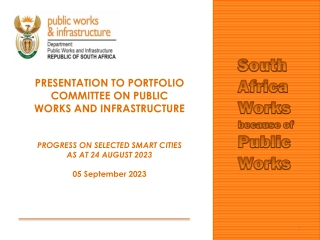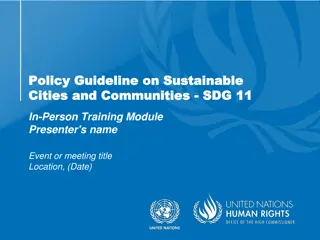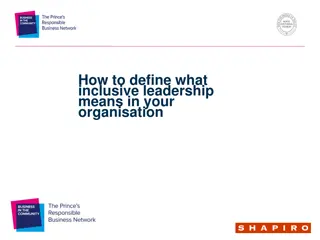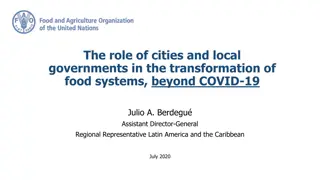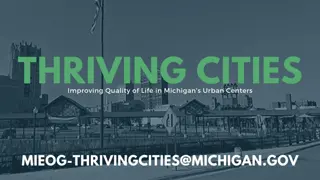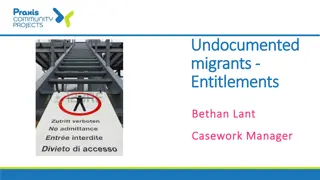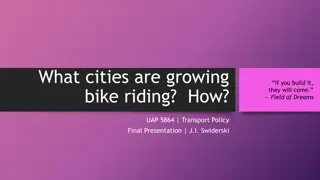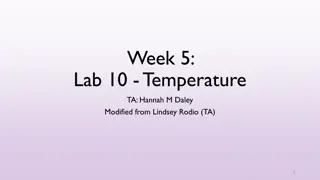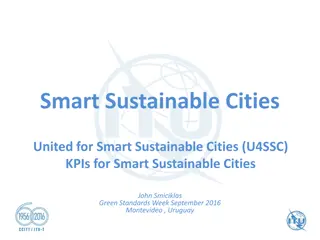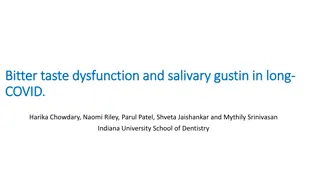
Ensuring Inclusive Cities: Strategies for NRPF and COVID Challenges
Discover how cities are mainstreaming inclusive public services, addressing potential risk factors for NRPF populations, and adapting to COVID impacts. Learn about targeted action plans, data-driven support, and responses to changing immigration systems.
Download Presentation

Please find below an Image/Link to download the presentation.
The content on the website is provided AS IS for your information and personal use only. It may not be sold, licensed, or shared on other websites without obtaining consent from the author. If you encounter any issues during the download, it is possible that the publisher has removed the file from their server.
You are allowed to download the files provided on this website for personal or commercial use, subject to the condition that they are used lawfully. All files are the property of their respective owners.
The content on the website is provided AS IS for your information and personal use only. It may not be sold, licensed, or shared on other websites without obtaining consent from the author.
E N D
Presentation Transcript
Inclusive Cities NRPF AND COVID RESEARCH BRIEF
Mainstreaming and building inclusive public services throughout the city a. Developing and implementing a targeted action plan to mainstream inclusion throughout the city both the local authority and its partners b. Developing services which are inclusive by default, working to provide equitable access to services for all newcomers where ever this is within the capacity of the local authority Links to the Inclusive Cities Framework c. Where data identifies gaps in outcomes for newcomers, providing targeted support aimed at addressing these gaps d. Providing day one civic orientation to help all newcomers familiarise themselves with the city The city has a plan in place to make its services inclusive by default, making them open and accessible to newcomers where this is in the power of local services. Targeted support helps to address gaps in outcomes between specific newcomer groups perhaps in relation to health, educational attainment or employment outcomes and is in place to meet the needs of asylum seekers, refugees and children in the care system with uncertain immigration status.
potential increased risk factors for the NRPF cohort changes in the need for support from local authorities COVID and NRPF changes in local authority responses to NRPF issues
of contracting COVID-19 Potential increased risk factors (Migration Exchange 2020) of having worse clinical outcomes following COVID-19 infection of facing indirect health impacts due to the pandemic of facing more severe socioeconomic consequences as a result of the pandemic
A shift in provision focussing on single homeless adults as part of the everyone in Changes in the need for support from local authorities A potential change in the profile of support to section 17 families (or equivalents in devolved administrations) and others The intersection of the COVID-19 pandemic with changes in the immigration system following Brexit, in particular the risk that people eligible for EU Settled Status scheme may not be applying for the scheme
Provision of accommodation Changes in local authority responses to NRPF issues Provision of food (or subsistence) Access to information, advice and communications Meeting other assessed needs in keeping with wider social care provision (for example in relation to disabilities or mental health
Taking account of the disproportionate impact for those subject to the NRPF condition Communications Provision and access to advice and information Policy Implications Stepping down the emergency measures and retaining accommodation capacity NRPF National Policy changes Wider changes to the immigration system

